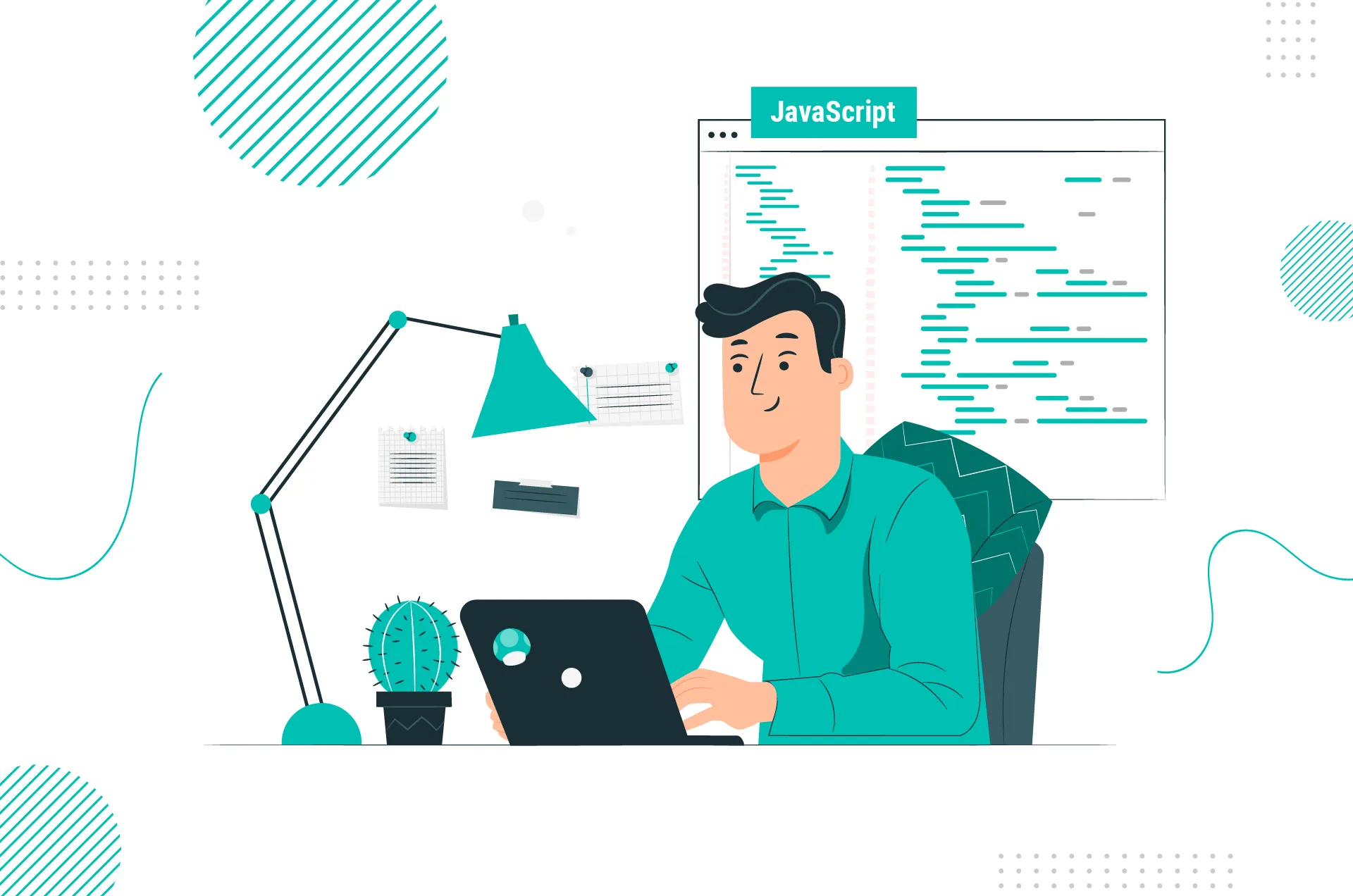Python vs JavaScript: Brief Comparison
Table of contents
What Is Python?
- Pros of Python
- Cons of Python
What Is JavaScript?
- Pros of JavaScript
- Cons of JavaScript
Python vs JavaScript Differences
JavaScript vs Python for Web Development
Python vs JavaScript: Popularity
- Python vs JavaScript: Career
The Bottom Line
While it's true that the best language choice for the development of a specific solution depends on particular project needs and varies from one case to another, the question of what is better, Python or JavaScript, is still common. Even though we can tell you from the very beginning that there is no definite answer, let's compare these two popular programming languages, so you can get a clear understanding of what is what, see the key similarities and differences, and learn about their global ratings based on various criteria.
What Is Python?

Python is an object-oriented high-level programming language widely used for rapid prototyping, web scripting, ad-hoc programming, XML processing, database creation, GUI, scientific applications, and game development. Also, it is one of the most required technologies in computer science domains like AI, ML, and deep learning solution development.
Python's highly dynamic and readable nature makes it stand out. Python utilizes whitespace indentation instead of curly brackets for delimiting code blocks and eliminates the need to place semicolons after statements, ensuring easier, more transparent, and faster code development and a lower barrier for entry.
The benefits of learning Python are widespread and far-reaching, which paves the way for the language's leading positions in various tech ratings.
Pros of Python
- Cross-platform compatibility: Runs on various hardware platforms with a consistent user interface.
- Interactive testing and debugging: Facilitates efficient testing and debugging of code.
- Automatic garbage collection: Manages memory automatically, enhancing performance and reliability.
- Integration with other languages: Easily integrates with Java, C, and C++, broadening its application scope.
- Concurrency support: Handles concurrent operations effectively, suitable for complex programming needs.
- Flexible utility: Applicable across numerous domains, including web development and artificial intelligence.
Cons of Python
- Performance limitations: Python's interpreted nature can lead to slower execution compared to compiled languages.
- Global Interpreter Lock (GIL): The GIL limits concurrent thread execution, impacting performance on multi-core processors.
- Not the best choice for mobile development: despite frameworks like Kivy and BeeWare, Python isn't preferred for native mobile app development due to relatively high memory consumption and limited speed.
- Less suitable for systems programming: Python lacks the control and efficiency needed for low-level systems programming.
- Version compatibility: Compatibility issues between Python 2 and 3 pose challenges with older codebases using Python 2.
What Is JavaScript?

JavaScript is an object oriented programming language used for the creation of interactive web pages, scalable applications, Single Page Applications (SPAs), a variety of mobile applications and other solutions and is one of the most demanded technologies existing today. It allows developers to build both the frontend and backend of applications, offering a number of open-source tools. For client side programming, it offers tools such as jQuery, AngularJS, Ember.js, ReactJS, etc. While for server side programming if offers tools such as MongoDB, Node.js, Express.js. etc. Furthermore, JavaScript runs in the browser, ensuring real-time interactions without requiring any resources from the web server.
Pros of JavaScript
- Low Entry Barrier: JavaScript is accessible to beginners, making it easy to start learning and applying.
- Enhanced with Dependencies: Supports a vast range of dependencies that expand functionality and development options.
- Robust Testing Workflow: Offers comprehensive testing tools and frameworks for reliable application development.
- Rich Ecosystem: Boasts a vast ecosystem with libraries and frameworks like React, Angular, and Node.js.
- Strong Community Backing: Supported by an extensive and continuously evolving network of developers.
Cons of JavaScript
- Browser compatibility challenges: Variations in how different web browsers interpret JavaScript can lead to compatibility issues, requiring additional code for consistent performance.
- Security concerns: If not used carefully, JavaScript can introduce vulnerabilities such as Cross-Site Scripting (XSS) and Cross-Site Request Forgery (CSRF), demanding a deep understanding and adherence to best practices.
- Performance limitations: As an interpreted language, JavaScript may exhibit slower performance compared to compiled languages, although modern engines have narrowed this gap.
- The constant evolution of the language: JavaScript's rapid evolution and frequent updates, while beneficial for keeping it current, can pose a challenge for developers to stay abreast of the latest changes.
Python vs JavaScript Differences
Even though Python and Javascript have something in common, like both support object-oriented programming and are high-level coding languages with dynamic typing, which makes them relatively easy to learn, they also have a lot of distinctions. Let's see what they are in terms of data types, encoding, numeric types, definition of objects and functions, offered modules, definition of attributes, and used models.
| Python | JavaScript | |
| Popularity | Very popular and widely used in various domains such as web development, data analysis, artificial intelligence, and scientific computing. | Highly popular, especially in web development, primarily on the client side, but also on the server side with Node.js. |
| Readability and syntax | Known for its clear and unique syntax that emphasizes readability. Uses indentation to define code blocks. | Uses traditional C-like expressive syntax with curly braces to define code blocks. |
| Standard library | Features a rich, general-purpose standard library. | Features a rich standard library focused on web development. |
| Performance of code | Performance often depends on the task, with certain tasks benefiting from implementation options, like PyPy, which can significantly enhance speed. | Shows very good performance in CPU-intensive workloads due to Just-In-Time (JIT) compilation and optimizations in engines like V8. |
| Inheritance model |
Employs a class-based inheritance model, allowing for structured and hierarchical object definitions. |
Uses prototype-based inheritance, offering a flexible and dynamic approach to object creation and extension. |
As you can see, despite sharing some common features, these languages have a lot of distinctions, resulting in each being more suitable for specific development approaches and the creation of different solutions. For example, when it comes to mobile development, it is better to learn JavaScript. In contrast, scientific applications are better to be developed with Python. But what about web development?
JavaScript vs Python for Web Development
The first thing to note is that both JavaScript and Python are widely used for the creation of web solutions. Furthermore, these languages are always considered an excellent addition to any full-stack portfolio.
In web development, JavaScript can be used both for the backend and frontend development of web applications. And when it comes to Python, this language perfectly suits server-side development needs. So generally, when answering the question of what is better for web development, JavaScript or Python, the answer is JavaScript for the client-side programming and Python for the server-side.
Python vs JavaScript: Popularity

According to various technological ratings, including the latest StackOverflow developer survey, JavaScript remained the most popular development technology. It's been at the top for 11 years already, but is there a chance that Python will replace it in the near future?
To answer this question, we have to mention that while JavaScript is mainly used for the creation of web and mobile solutions, Python secures its high position in the ratings as the language primarily used for the development of several innovative solutions such as AI, robotics, and IoT. So, the higher the demand for innovations, the more popular Python is. For example, Python is the leader in the TIOBE Programming Community index, which gauges the popularity of programming languages based on factors like the number of skilled engineers, educational courses, third-party vendors, and search engine data. This position underscores Python's increasing influence and versatility, which extends to a wide range of applications, from developing complx websites like YouTube or Instagram to cloud computing projects.
Python vs JavaScript: Career
According to the abovementioned survey, median income for JavaScript professionals is now approximately $74,000, while Python developers median income is slightly higher at $78,000. Additionally, both JavaScript and Python consistently rank among the highest in online job postings, ensuring a wealth of job opportunities for professionals in these domains.
JavaScript opens doors to roles such as:
- UI/UX Designer
- Web Designer
- Web Application Developer
- DevOps Engineer
- Full-stack Developer
Python on the other hand directs you to roles like: - Data Scientist
- Backend Engineer
- Game Developer
- Machine Learning Engineer
- Quality Assurance Engineer
- Data Analyst
- Product Manager
The Bottom Line
When comparing JavaScript to Python, it becomes obvious that the primary distinction between these two technologies is dictated by how programmers use them. At Emerline, we have strong expertise in both languages, taking advantage of JavaScript for the creation of user-friendly frontend applications, and using Python for backend development and the creation of data science applications, IoT, and AI. No doubt, there is always a lot of space for other variations, so if you are interested in finding out which technology better suits your project needs, reach out to us for a free consultation.
Published on Feb 6, 2023





